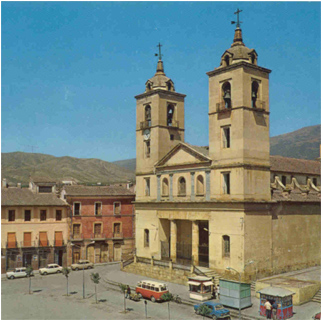History
Berja can trace its’ history to Phoenician and Iberian times and was subsequently, without doubt, a part of the Roman Empire, known then as Vergis. Many artefacts from the Roman occupation are conserved here, salvaged from the Villavieja ruins. Remnants of an amphitheatre and an aqueduct can be seen along with Mosaics found to be the same in style to those unearthed in Pompeii and Herculeum.
With the arrival of Saint Tesifón in the First Century, Berja began its Christian era. From these times, coins and crucifixes have been discovered and above all, a sarcophagus, surrounded with a magnificent frieze, found in the old town of Alcaudique in 1923. It is one of the best conserved pieces in the Iberian Peninsular and is now on display for all to admire in the National Archaeological Museum, with an exact reproduction in The Archaeological Museum in Almeria city.
A huge earthquake destroyed this original settlement in the fifth century leaving the survivors to spread out and seek refuge in the surrounding fertile lands. It is from one of these satellite communities that modern day Berja descends, receiving its’ definitive name in the time of the Arab rule.
After their conquest of Berja in the early part of the 8th Century, the Saracens settled here. Towards the end of the 9th Century they built an Alcazaba or citadel using the original Roman walled ‘compound’ or city as its footprint. Giving origin to the Muslim ‘Madina Barcha’ and forming one of the twelve ‘Tahas’ in which the Arabs divided the Alpujarra region. From this era, in the local area of Beneji, archaeologists have discovered and preserved typical Arab baths.
The area was re-taken by the Christians in 1489AD. Just a short time before the large Arab settlement in Granada was also re-conquered. Ceded at this time was one of the Catholic Kings, ‘King Boabdil The Boy’, who, soon after taking the area, left permanently for Africa. He sold the area along with other lands and settlements in the Andarax Valley to the Catholic King, Fernando.
Difficulties arose between the new Christian settlers and the Moorish people. Breaches of local agreements and the general diversity of the population culminated in the rebellion of the Moorish peoples in the ‘Bloody Christmas’ period of 1568AD. During which, the majority of the Christian people living in the area were killed. Once the uprising had been suppressed, Berja was left almost completely unpopulated, apart from a few military installations and detachments. Here, Commissioner Gaspar of Avila with some 200 people resettled forming the five areas that then made up the city; Capilerira, Pago, Julbina, Beneji and Alcaudique.
This new Christian population, their surnames surviving today, fought to keep the traditional Moorish agriculture. Typically large numbers of Mulberry Trees were planted in order to cultivate silkworms. This resulted in an important local textile industry, no longer in existence today.
From the beginning of its’ modern era, Berja belonged to the administrative area of the Mayoralty of the Alpujarras. Seated in Ugíjar, inside the former kingdom of Granada. This continued until the Royal order of 29th October 1753, when the area was promoted to Mayoralty Major.
On the 25th August 1804AD another large earthquake shook the area and destroyed much of the cities significant structures.
Photo Image of the "Plaza de la Constitución" from 1.953 [To extend]
[To extend]
In the year 1833AD, Mainland Spain was divided into Provinces by Francisco Javier Burgos from Motril. At this time the Alpujarra district was divided in two, leaving one half in the Granada Province and the other forming part of the newly created Province of Almería with Berja having the privilege of becoming the Capital after Baza and Almería City.
Finally, in the second half of the nineteenth century, the appearance of the city changed. Under influences of the Industrial Revolution began an intensive exploitation of the lead mines found in the Sierra de Gador Mountains and in turn, a period of huge wealth and splendour for Berja. A reported 20,000 miners and 10,000 labourers were in the area in 1893AD and it is recognised that this area regulated the worlds’ lead prices at this time. This thriving mining era has left an important industrial heritage to the area, seen today in the remnants of wells, foundries and galleries and not least in the large number of now restored and conserved Manor Houses built during these wealthy years.
After the decline of mining in the latter years of the nineteenth century the appearance of the surrounding countryside changed with the rise of a new creator of local wealth - vineyards. The grapes, sometimes also known as ‘boat grapes’, were cultivated and thanks to their hardiness, able to be exported from the port at Almería in large barrels by boat (hence their nickname ‘boat grapes’). This form of cultivation and crop continued to be a large local industry until the 1980’s when intensive farming under plastic greenhouses became the norm. This successful evolution, along with the major improvements in global communications and local and national transport networks resulted in the decline of the traditional vineyards and is now the principal economic pillar of the district.
Today, Berja is a beautiful city with more than 15,500 habitants. Both traditional and modern, as bright and clean as the crystalline water found in it’s abundant natural springs and fountains. The oldest homes still retain their small orchards offering a historical overview of past distinguished and noble times.